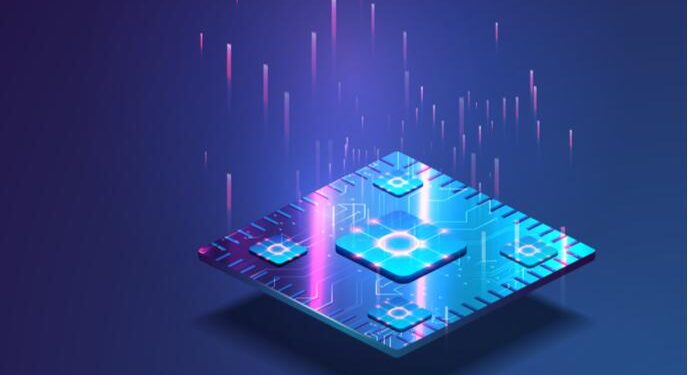In an era where the boundaries of computing are constantly pushed, the quest for faster, more efficient processing methods has taken a fascinating turn toward the speed of light itself. Imagine a world where calculations occur not in milliseconds, but at the very speed photons travel-ushering in possibilities that could redefine technology as we know it. This article explores the emerging field of light-speed analog computing, a cutting-edge approach that merges the principles of photonics with classical computation. As researchers and engineers probe the potential of this luminous frontier, we ask: Could harnessing light’s velocity become the cornerstone of tomorrow’s technological landscape? Join us as we delve into the science, challenges, and promises behind this radiant revolution.
The Science Behind Light-Speed Analog Computing and Its Potential Impact
At the core of this breakthrough technology lies the principle of harnessing photons instead of electrons to perform computations. Unlike conventional digital processors, light-speed analog computing leverages the continuous properties of light waves, such as amplitude and phase, to represent and manipulate data. This allows for extraordinarily fast parallel processing with minimal energy loss and unprecedented bandwidth. Moreover, the analog nature of computation enables the handling of complex, real-world problems-like image recognition and natural language processing-more naturally and efficiently than binary systems. By utilizing photonic circuits and integrated waveguides, these systems can perform calculations at speeds approaching the speed of light, a feat impossible for electronic transistors constrained by physical resistance and capacitance.
- Ultra-low latency: Light signals transmit data nearly instantaneously.
- Energy efficiency: Reduced heat generation compared to traditional processors.
- Parallelism: Simultaneous processing of multiple data streams with high fidelity.
- Scalability: Photonic chips can be miniaturized without losing speed advantages.
| Feature | Light-Speed Analog | Traditional Digital |
|---|---|---|
| Data Transmission Speed | ~300,000 km/s (speed of light) | Up to a few GHz |
| Energy Consumption | Low (photonic efficiency) | High (electrical resistance) |
| Computational Nature | Analog, Continuous | Digital, Discrete |
| Parallel Processing | Intrinsic and efficient | Limited by architecture |
Exploring Real-World Applications in Bioengineering and Beyond
Harnessing the power of light-speed analog computing is already beginning to reshape numerous sectors beyond theoretical physics. In bioengineering, for instance, the ability to perform ultra-fast, parallel computations with photons rather than electrons opens new doors for real-time processing of complex biological data. This can accelerate genetic sequencing, improve the accuracy of neural imaging, and enable adaptive biosensors capable of instantaneous environmental response. The innate speed and energy efficiency of light-based systems promise breakthroughs in personalized medicine, where rapid decision-making could mean the difference between treatment success and failure.
Beyond healthcare, this emergent technology has profound implications for environmental monitoring, robotics, and artificial intelligence development. Industries reliant on complex simulations-such as climate modeling, molecular dynamics, and autonomous navigation-stand to benefit from this paradigm shift. Below is a snapshot that encapsulates potential application areas and their transformative impact:
| Application Area | Benefit | Current Challenge |
|---|---|---|
| Genomic Data Analysis | Faster sequencing & interpretation | Data overload and processing lag |
| Neural Network Simulations | Enhanced accuracy and speed | Energy consumption and latency |
| Robotics Control Systems | Real-time adaptive behavior | Computational bottlenecks |
| Climate Modeling | Improved prediction fidelity | Extensive compute requirements |
Strategic Steps for Integrating Light-Speed Analog Technologies into Modern Systems
Successfully combining light-speed analog technologies with contemporary digital frameworks demands a meticulous approach, balancing innovation and practicality. Key actions include calibrating optical components to ensure signal fidelity, alongside developing hybrid processors capable of seamlessly translating analog optical signals into digital outputs. Establishing robust interfaces between photonic circuits and existing silicon-based chips can significantly reduce latency, while adaptive algorithms must be tailored to interpret the nuances of analog light-wave computation. This requires an interdisciplinary collaboration, merging knowledge from photonics engineering, software development, and system architecture.
To illuminate the path forward, consider this strategic checklist embracing both hardware and software layers:
- Modular photonic units: Design interchangeable components that can be upgraded independently.
- Dynamic calibration systems: Implement real-time feedback loops for signal optimization.
- Cross-platform compatibility: Ensure firmware supports multiple operating environments.
- Scalable integration protocols: Facilitate seamless expansion from prototyping to mass deployment.
- Energy-efficient designs: Maximize performance while minimizing power consumption.
| Integration Aspect | Key Challenge | Proposed Solution |
|---|---|---|
| Signal Conversion | Maintaining data integrity | High-precision analog-to-digital converters |
| Hardware Alignment | Optical path discrepancies | Auto-alignment calibration systems |
| Software Interface | Interpreting analog waveforms | Adaptive machine learning algorithms |
Final Thoughts
As we stand at the crossroads of innovation, light-speed analog computing beckons with the promise of radically transforming how we process information. While challenges remain, the fusion of optics and computation could illuminate pathways once thought impossible, reshaping technology’s horizon. Whether this luminous frontier becomes the new standard or a stepping stone toward even greater advancements, one thing is clear: the future of computing may very well be written in the language of light.






![The Surprising Studio Ghibli Film That Influenced Netflix’s Train Dreams [Exclusive] – Yahoo](https://earth-news.info/wp-content/uploads/2025/11/326397-the-surprising-studio-ghibli-film-that-influenced-netflixs-train-dreams-exclusive-yahoo-360x180.jpg)
























